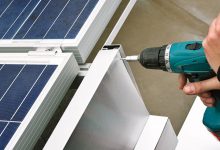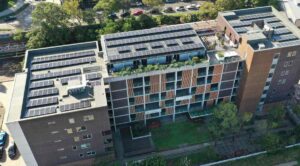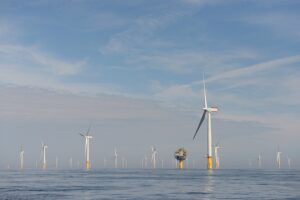Engineering and construction giant Downer EDI has reduced its profit guidance for 2020 to $300 million, as it announced a write-down of its expected earnings, after the company encountered ongoing difficulties at the company’s renewable energy and mining projects.
In an announcement to the Australian Stock Exchange, Downer said it has reduced its profit guidance for the 2020 financial year to $300 million, detailing $85 million of expected reduced earnings across the business, following a blow out in the cost to complete construction projects currently in progress, and a smaller pipeline of new projects.
It cited cited the grid connection issues that have dented investment in new large-scale renewable energy projects as a contributing factor for the reduced earnings. Other contractors are also likely to be hit by the delays as project owners and contractors fight over who should be held to account for lost revenue.
Project blockages are occurring across the grid, but are being particularly badly felt in western Victoria and south western NSW, where project owners have been told they face month of delays. Issues have already surfaced at the big Sunraysia solar farm in NSW, and five other solar farms have had their output curtailed. Others have been told they will have to queue, one by one, to connect.
In August, Downer announced that it had encountered significant challenges at the Murra Warra wind farm, after project partner and turbine supplier Senvion entered voluntary administration.
“Our cash performance for the 2020 financial year is not expected to be as strong as it has been in recent years due to a number of known factors, including the cash impact of Murra Warra wind farm, the timing of cash flows from large projects winding down, and the timing of cash payments for the first bogie overhaul for the Waratah Trains,” Fenn told the company’s annual general meeting in November.
It now appears the financial status of Downer’s projects have since deteriorated, with the company saying that loss-making projects had worsened over the summer, and contributed the bulk of the profit write-down.
“As work progressed to achieve practical completion on a small number of loss-making construction contracts in the [Engineering Construction and Maintenance] division, it has now become clear that the costs incurred during December and January materially exceeded the company’s estimates and, in addition, a detailed review of customer claims and variations has reduced revenue recognised to date,” the company said in a statement.
“As a result, we have increased the forecast net costs to complete these projects by $43 million and these costs will be reflected in Downer’s results for the first half of the 2020 financial year,” Downer CEO Grant Fenn said.
“We are particularly disappointed with the deterioration of these projects at such a late stage of their delivery. We do not expect any further increase in costs above our revised estimate.”
Downer did not specify which projects it was referring to as the “small number of loss-making construction contracts”, but it is likely to include the troubled Murra Warra wind farm project.
Following a restructuring of the Murra Warra project, Downer EDI was lumped with $45 million in lost pre-tax earnings to complete the project, as it still carried the legal liability to complete the project.
All 61 turbines at the Murra Warra wind farm have now been installed but have faced further delays in final commissioning as AEMO said there would be delays in getting the project connected to the grid.
It may also be the first of many announcements from companies that provide services to Australia’s renewable energy sector, as Downer’s reduced earnings guidance comes as new data from Bloomberg New Energy Finance showed investment in large-scale renewable energy projects in Australia had declined by 60 per cent in 2019 as grid connection issues, and ongoing uncertainty over federal climate and energy policy hit investor confidence.
The company said that lower than expected “win rates” and a reduction in the expected pipeline of new construction work the construction division would see a $300 million reduction in revenues, and a $20 million reduction in forecast earnings.
Downer said that it had also set aside $10 million towards a ‘one-off’ restructuring of its engineering, construction and maintenance division, reflecting “the net impact of staff redundancies.”
The company expects that the restructuring will ultimately deliver improved earnings to the company in the long-term.
Downer shares were down more than 20 per cent in the day’s trading, following the profit write-down.
Downer EDI has been contacted for further comment.
One of Downer’s biggest rivals, RCR Tomlinson, collapsed under the weight of problems associated with the bulk of its 12 contracted solar projects, while many other contractors have been hit in some way by connection and commissioning delays, and in some cases cost over-runs.










